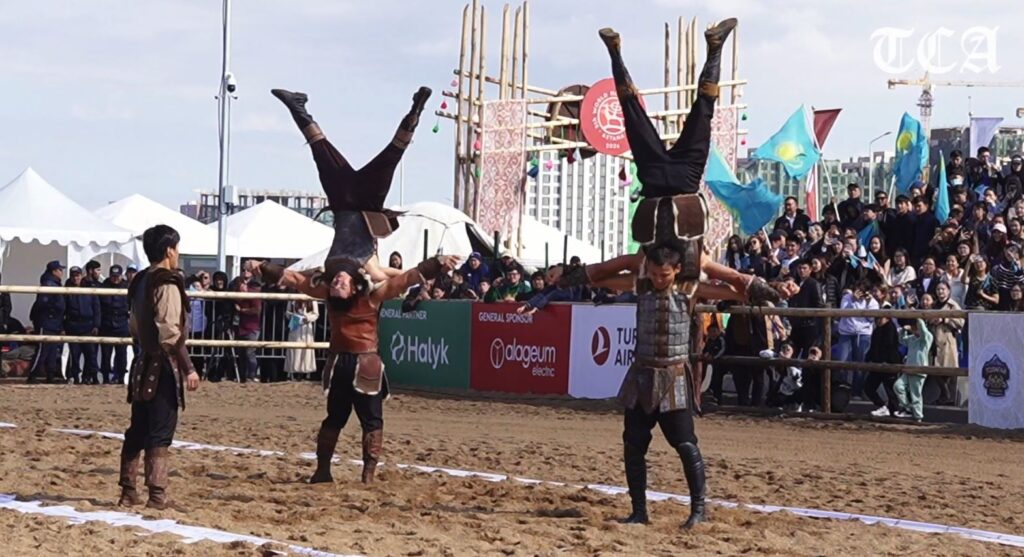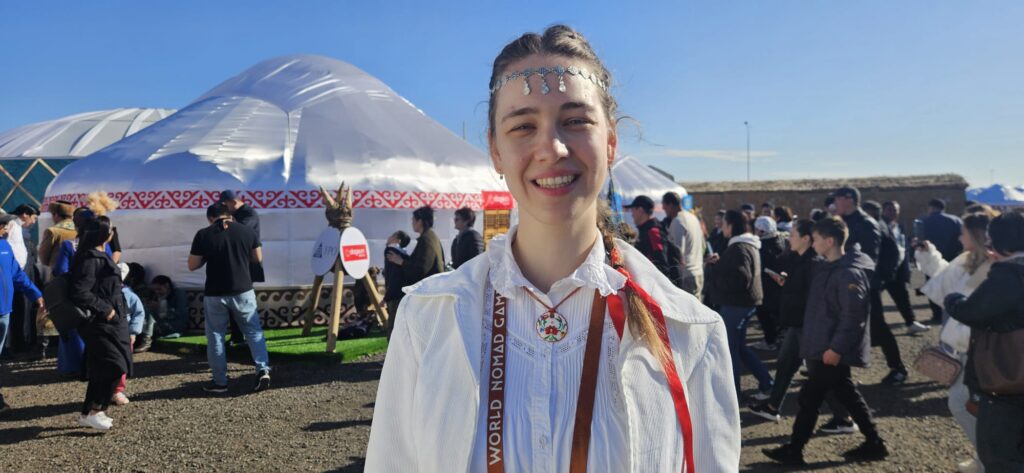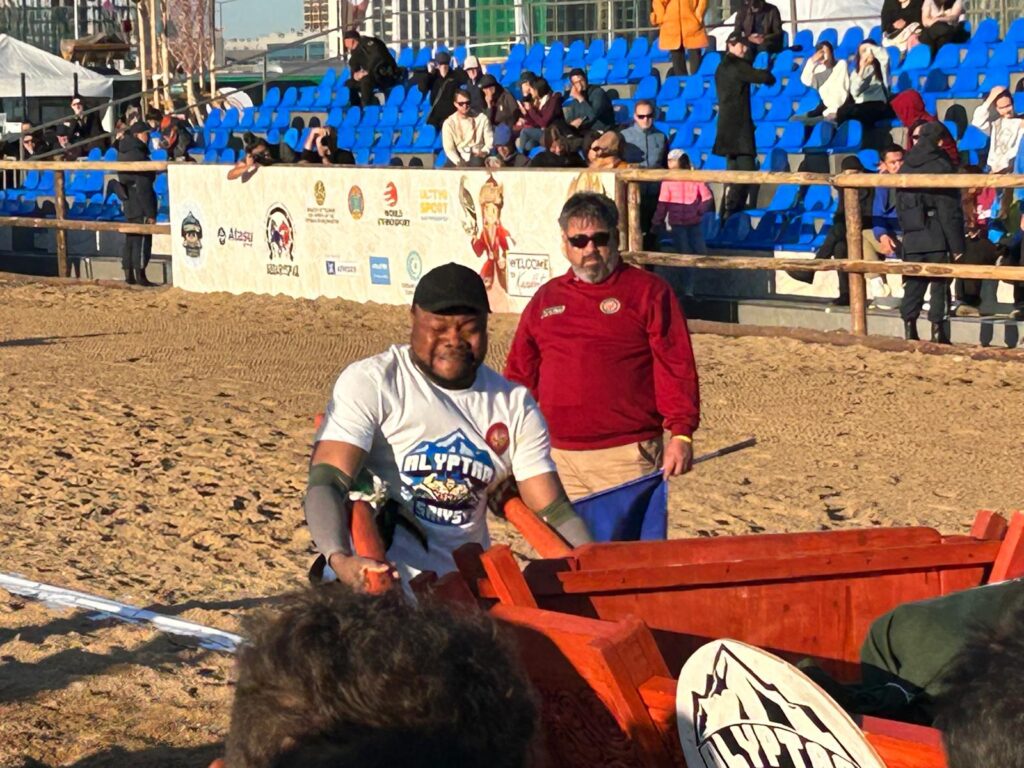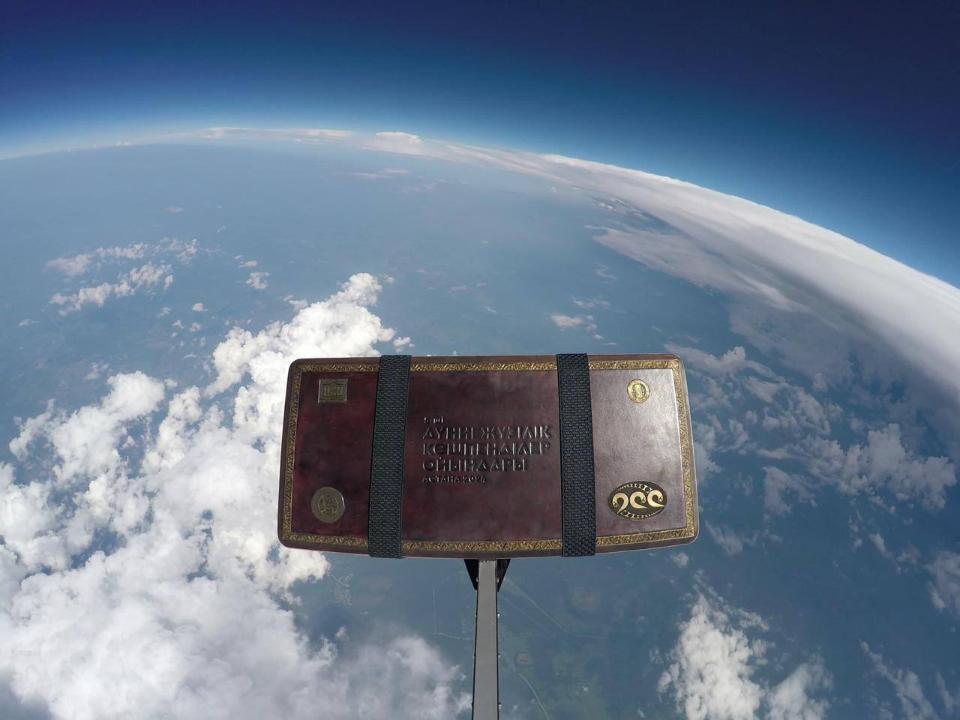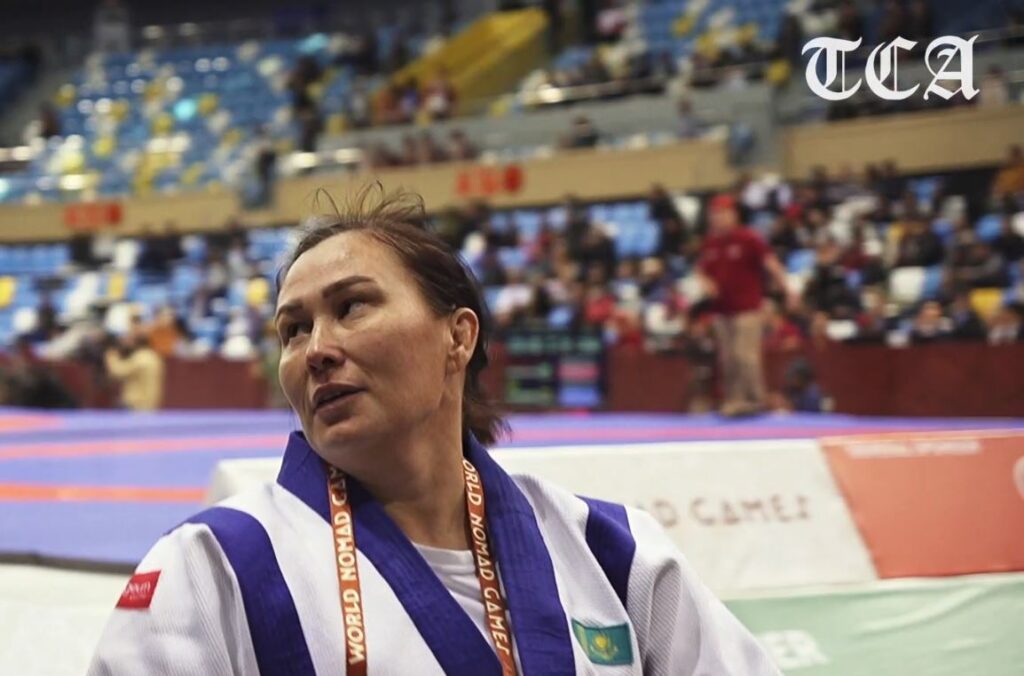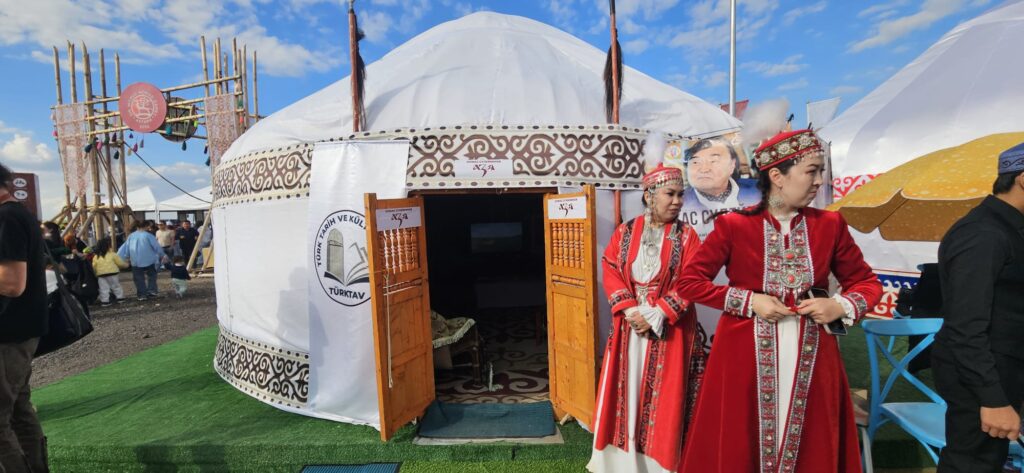On day four of the World Nomad Games, themed as the “Gathering of the Great Steppe,” TCA attended the finals of the Powerful Nomad competition, and spoke to visitors from the West about what had drawn them to Kazakhstan and the Games. “I'm an American traveling around the world,” Andy from Houston, Texas, one of a group of friends who’d met on the road in Central Asia told TCA. “I’ve wanted to come to the World Nomad Games for quite a few years, now, but haven't got the chance. I'm traveling full-time this year and figured I’d swing by Kazakhstan and check it out.” “It’s so cool to be here and see all the sports and cultures together,” Liam from Vancouver, Canada, added. [caption id="attachment_23061" align="aligncenter" width="2560"] Image: TCA, Stephen M. Bland[/caption] “We knew about the World Nomad Games from having lived in Kyrgyzstan,” Allison from Miami told TCA. “So, when we found out about this one, we decided to come because it's been on the bucketlist. It's been a blast!” “We’re here because we’re doing the five Stans; When we arrived, we found out this event was going on, so we figured we had to come. We really want to see the hunting with birds. Everyone's been very welcoming, and the food has been good,” Lauren from San Diego said. “I’m traveling in Kazakhstan because I wanted to do horseback stuff,” said Hellie from the UK. “I’ve never been to Kazakhstan before. I was curious about the Games, and it’s amazing how much I’m learning here. The tents from the regions are really cool.” [video width="1920" height="1080" mp4="https://timesca.com/wp-content/uploads/2024/09/IMG_3959.mp4"][/video] Reflecting the cosmopolitan crowd, on the field for the final of the powerful nomad strongman competition were athletes from around the globe: Cyprus, Armenia, Uzbekistan, Tajikistan, Romania, China, Nigeria, Iran, Belarus, Spain, Kuwait, Russia, India, and Kazakhstan. Given the response from the raucous, flag-waving home crowd, you didn’t need to be able to hear the announcer to know which was the Kazakh competitor, but warm and hospitable as ever, all of the competitors were well supported, particularly the ebullient Jerry from Nigeria. [caption id="attachment_23063" align="aligncenter" width="2391"] Image: TCA, Stephen M. Bland[/caption] In the opening discipline of squats with a 100-kilogram bag – with four objects protruding which made it resemble a carcass - the hulking men strained every sinew, with some faring better than others, whilst one keeled over as if having suffered a hernia. It came as no surprise, as outside the arena a smaller, lighter weight set up to challenge spectators saw many fall afoul. Next up was pulling a trolley weighing 200 kilos, which resembled a horse carriage. “Bad luck; it was his first time trying,” the ever-comedic commentator chipped in after the participant from Kuwait managed three meters. Others fared far worse. The standout, however, was the tallest man in the competition, the entrant from Iran, who managed a staggering twenty-six meters. [video width="1920" height="1080" mp4="https://timesca.com/wp-content/uploads/2024/09/IMG_3968.mp4"][/video] “Wow!” the announcer chimed. “It will be very difficult to bring...
